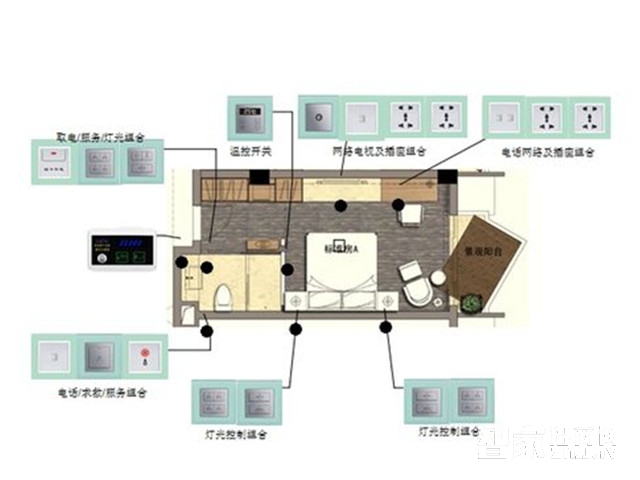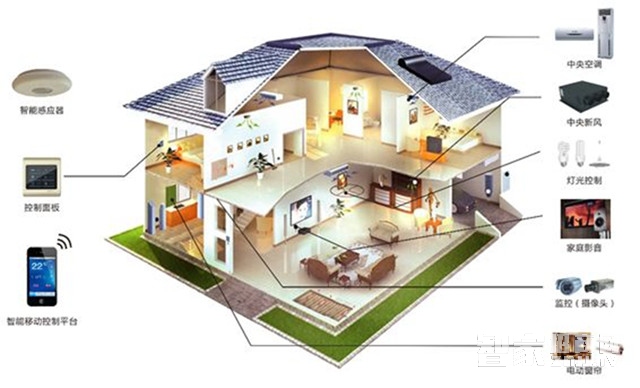In the era of information technology, the trend of home automation has gradually taken shape, and the scope of home wiring has significantly expanded. Today, smart homes are categorized based on their wiring methods, with three main technologies being widely used: centralized control, fieldbus, and wireless communication. This article provides a detailed overview of these control technologies.

### 1. Fieldbus Technology
Fieldbus control systems enable networking and signal transmission for home lighting, appliances, and alarm systems through a system bus. It uses decentralized field control technology, allowing various functional modules within the network to connect directly to the nearest bus point, making wiring more convenient.
Most fieldbus systems support any topology routing, such as star or ring structures. The wiring for strong circuits like lighting and outlets remains similar to traditional wiring. "One light, multiple controls" is common in home applications. Previously, this was done using double or quadruple switches, which involved complex wiring and high costs. With bus control, no additional wiring is needed, offering a fully distributed intelligent control network.
The fieldbus system is typically composed of a power supply, twisted pair cables, and functional modules. Each module is connected in series along the twisted pair, without polarity. It supports two-way communication, interoperability, and programmable control components. The typical structure uses a twisted pair bus, where each node can draw power (24V DC) from the bus and communicate with other nodes through the same line, regardless of topological logic. The system operates at speeds of 10KBPS and 4G.
Fieldbus systems are divided into several categories:
- **Basic Control**: Includes power supply, wireless remote interface, telephone interface, computer interface, Ethernet (TCP/IP), security, and alarm interfaces. These form the foundation of the bus system and provide an interface platform for other products.
- **Light Control**: Features touch-sensitive electronic switches and dimmers. These resemble regular switches and can replace them to achieve intelligent lighting control, including dimming and remote operation. If one switch fails, only the connected area is affected, and the original switch can be restored manually.
- **Electrical Control**: Involves controllable sockets that allow users to manage appliances like rice cookers and washing machines via remote control or phone. These sockets support both automatic and manual modes.
- **Infrared Control**: Used for controlling devices like air conditioners and TVs. It supports learning and memory functions for infrared signals, enabling control through various devices on the bus.
- **Security Control**: Includes sensors for motion, gas leaks, and smoke, as well as video intercom systems. These are easy to install and can be connected directly to the bus for remote alarms.
### 2. Centralized Control Technology
This method relies on a central host with a microcontroller as its core. The CPU handles signal processing, while the main board integrates peripheral interfaces, including security alarms, telephone modules, and input/output circuits. However, due to system limitations, expanding after installation is difficult. The cabling is more complex than traditional wiring, and there are many such products available today.
### 3. Wireless Communication Technology
Modern wireless smart home systems include:
1. Star connection
2. Bus connection
3. Power line carrier
4. Infrared (IR)
5. Wireless (RF)

### Which Wiring Method Is Best?
**From a stability perspective**, star connections are the most reliable, followed by bus, power line carrier, infrared, and wireless. Traditional security systems use star connections, making them highly dependable. While bus connections also require wiring, they have fewer connections when handling many points, making them generally reliable. Power line and wireless systems face challenges like interference between homes, requiring isolation or frequency hopping technologies for solutions.
**From a market perspective**, the smart home industry includes new residential areas, personal home improvement, and old home renovations. New communities prioritize reliability, often using star connections. Personal improvements may combine star and bus methods for scalability. Old homes typically rely on power line or wireless due to limited cabling.
**In practice**, the best solution is a mix of wiring methods. For example, security systems should use star connections, while lighting and appliances can use bus, power line, or wireless. A combination of different techniques ensures flexibility and efficiency in smart home setups.
### Related Suggestions:
- Article: How to Wire a Smart Home? Smart Home Wiring Strategy Analysis
- Recommended: Health Monitoring Products, Security Franchise Store, Rongshida Robot
FAKRA Automotive High Frequency Cable Assembly
Fakra Automotive High Frequency Cable Assembly,High Frequency Cable,High Frequency Cable Connectors,Automotive Board Connector
Dongguan Zhuoyuexin Automotive Electronics Co.,Ltd , https://www.zyx-fakra.com